1. Spam
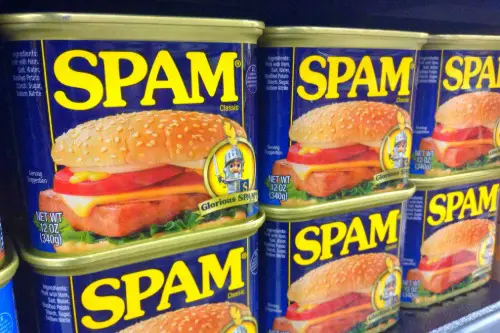
Spam became a household name in the U.S. during World War II, when fresh meat was scarce and shelf-stable foods were vital, according to Alex Chun from Smithsonian Magazine. Hormel’s canned meat product was shipped to soldiers overseas, but it also found a place in American kitchens. People got creative with it—frying it, baking it, even slicing it into sandwiches. It was convenient, cheap, and didn’t need refrigeration, which made it a perfect crisis-time staple.
After the war, Americans had developed a nostalgic taste for it, and it stuck around. In fact, Spam’s legacy is so tied to WWII that some veterans even credit it with keeping them fed. It might be divisive today, but there’s no denying it helped shape mid-century American food culture. Hawaii, which was a strategic military location, still embraces Spam with open arms—Spam musubi, anyone?
2. Victory Garden Vegetables
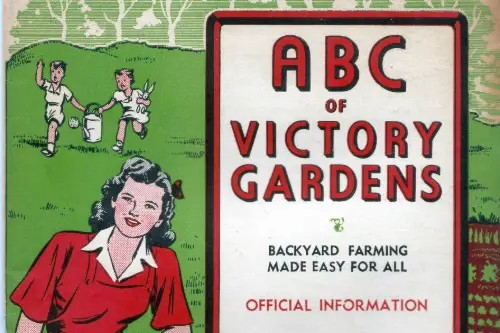
During both World Wars, the U.S. government encouraged people to plant “Victory Gardens” to supplement food rations, according to Jennifer Steinhauer from The New York Times. That meant homegrown carrots, tomatoes, beans, and leafy greens started showing up in more American meals. People who’d never gardened before learned how to cultivate their own food in backyards, city lots, and even window boxes. This DIY food movement brought fresh vegetables into daily diets in a whole new way.
Even after rationing ended, the gardening habits stuck with many families. The experience of growing their own food gave people a sense of control and purpose during uncertain times. Some credit these gardens with laying the groundwork for the home gardening and farm-to-table movements we see today. Basically, a wartime survival tactic turned into a lifestyle shift.
3. Instant Coffee
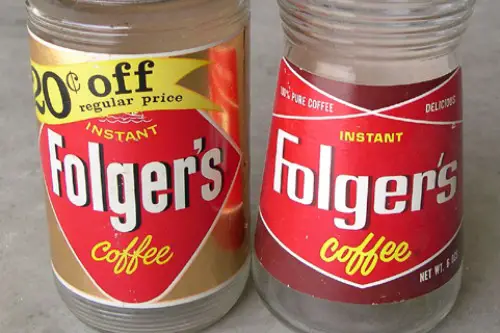
Before World War II, Americans were more into percolated or brewed coffee. But during the war, instant coffee became standard issue for soldiers who needed a quick caffeine fix in the trenches, according to Jeff Koehler from NPR. It wasn’t exactly gourmet, but it was fast, portable, and got the job done. Brands like Nescafé and Maxwell House gained huge popularity thanks to their military contracts.
When soldiers came home, they brought their instant coffee habits with them. It was a small comfort that reminded them of their service and also fit into the fast-paced lifestyle of postwar America. By the 1950s, instant coffee was a kitchen staple and heavily advertised on TV. That quick cup of joe really came from a place of necessity.
4. Jell-O Salads
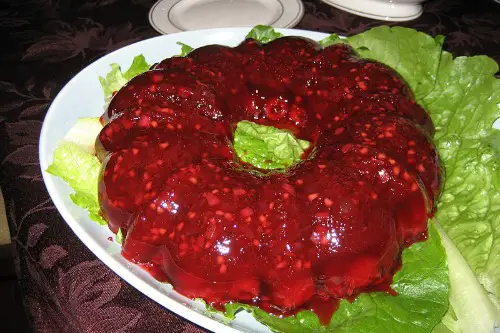
Jell-O had been around since the 1800s, but it wasn’t until the Great Depression and World War II that molded gelatin salads became a hit, according to Brette Warshaw from Food52. With meat, dairy, and fresh produce rationed, homemakers turned to creative ways of stretching ingredients—and gelatin was cheap and versatile. You could throw leftover bits of veggies, canned tuna, or even chopped hot dogs into a Jell-O mold and call it dinner. It sounds wild now, but it made sense when food waste wasn’t an option.
By the 1950s, these gelatin-based dishes evolved into a kitschy culinary trend. They were flashy, easy to prepare, and perfect for potlucks and dinner parties. Though we might raise an eyebrow at lime Jell-O with shredded cabbage today, these dishes were once symbols of resourcefulness and pride. They were a creative response to food insecurity turned suburban statement piece.
5. Macaroni and Cheese

Mac and cheese has European roots, but it became an American favorite during the Great Depression and again during WWII. Kraft introduced its boxed version in 1937, marketing it as a cheap, filling meal that could feed a family of four for just 19 cents. With dairy and meat rationing in place, a cheesy, pasta-based dish was both economical and satisfying, according to Mike Snider from USA TODAY. Plus, it didn’t require any fancy ingredients or skills to make.
When rationing continued into the early 1940s, demand for Kraft Mac & Cheese skyrocketed. Two boxes were allowed per ration coupon, and Americans were all in. It became not just comfort food, but survival food with a cheesy twist. Today, it’s still a nostalgic classic that originated from hardship.
6. Frozen Dinners
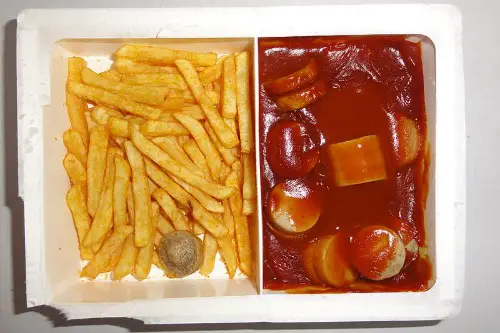
Frozen food existed before WWII, but it didn’t explode in popularity until the postwar period, which was shaped by the Cold War and changing family dynamics. The 1950s saw the rise of the “TV dinner,” first popularized by Swanson in 1953. The company actually had a surplus of frozen turkey from Thanksgiving and needed to get rid of it—so they packaged it with sides in compartmentalized trays. People loved the convenience, especially as more women entered the workforce.
The fear of nuclear war and the culture of preparedness also made frozen foods appealing. Stocking a freezer full of dinners felt like a form of control in a world of uncertainty. The popularity of TV dinners was part survival strategy, part cultural shift. And let’s be real—they also made watching the actual TV a whole lot easier.
7. Canned Soup
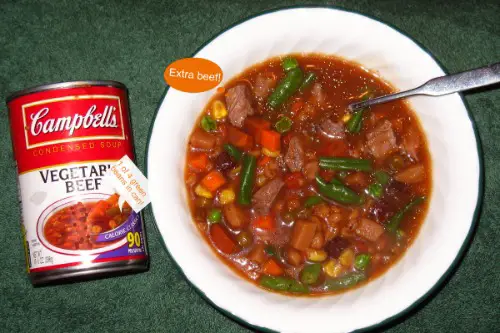
Campbell’s and other brands of canned soup became lifelines during the Great Depression and continued their reign during WWII. The ability to open a can and have a hot meal with minimal ingredients or effort was a huge win for struggling families. Canned soup was shelf-stable, affordable, and could even be stretched with water or bread. It was also promoted heavily in ads as a nourishing, family-friendly option.
After WWII, soup marketing shifted to highlight ease and modern living, fitting into the new ideal of the American homemaker. Post-crisis, people still loved the convenience, and the industry only grew. Tomato, chicken noodle, and cream of mushroom became pantry essentials. And don’t forget—cream of mushroom soup pretty much invented the casserole.
8. Ramen Noodles
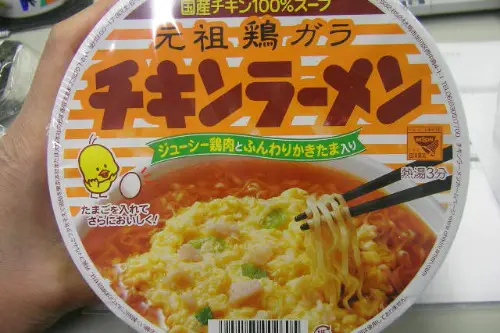
Ramen may be Japanese in origin, but instant ramen really took off in the U.S. after the 1970s oil crisis and during periods of economic recession. College students and low-income families found the cheap, salty noodles a lifesaver. A packet that cost less than a quarter could feed a hungry person in minutes, no stove needed. It was the definition of budget-friendly comfort food.
By the 1980s, ramen had evolved from a novelty into a necessity. It even got associated with the “struggling student” stereotype. But ramen’s popularity also coincided with growing Asian-American populations and the increased availability of international grocery products. So a global food became a crisis-time favorite, then a cultural fixture.
9. Powdered Milk

Powdered milk really gained traction during WWII, when shipping fresh milk to soldiers wasn’t feasible. It also showed up in American homes thanks to rationing and government-issued food aid. It wasn’t anyone’s first choice flavor-wise, but it kept people nourished and kids growing. Mothers used it for baking, drinking, and stretching whatever fresh milk they could get.
Later, during the Cold War and various economic downturns, powdered milk returned to the spotlight. It was inexpensive, lasted forever, and was often distributed in food assistance programs. If you grew up in a low-income household in the ’70s or ’80s, you probably remember that taste. It’s a product born from scarcity that never quite left the shelves.
10. Cornmeal

Cornmeal became crucial during the Great Depression when wheat flour was expensive and hard to come by. Southern households, in particular, leaned into cornbread, grits, and hushpuppies as daily staples. Government pamphlets even promoted cornmeal as a nutritious, budget-friendly ingredient. It was hearty, filling, and could be used in both savory and sweet dishes.
That crisis-time dependency reshaped regional cuisines and introduced more Americans to the wonders of cornbread stuffing and Johnny cakes. It’s still a cornerstone of Southern cooking and soul food traditions. Cornmeal went from a poor man’s substitute to a beloved ingredient with deep cultural roots. That’s a glow-up no one saw coming.
11. Margarine
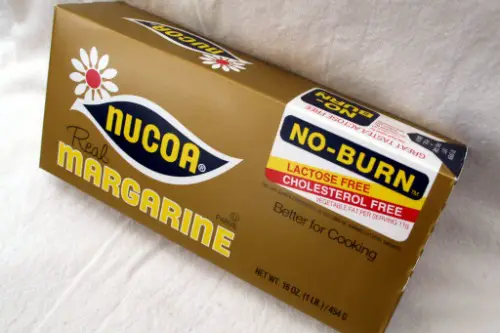
During WWII, butter was rationed, and margarine filled the gap—though not without controversy. Made from vegetable oils, margarine was initially white and unappealing, so manufacturers included yellow dye packets for families to mix in. It was a messy process, but it made the margarine look like butter, which helped it catch on. Some states even banned the coloring for a while to protect the dairy industry.
But once people got used to it, margarine stuck around—even after butter made its comeback. It became a symbol of frugality and wartime ingenuity. The postwar boom in processed foods only cemented its role in American kitchens. Today, it’s still a staple for many, even if butter has regained its gourmet status.
12. Peanut Butter
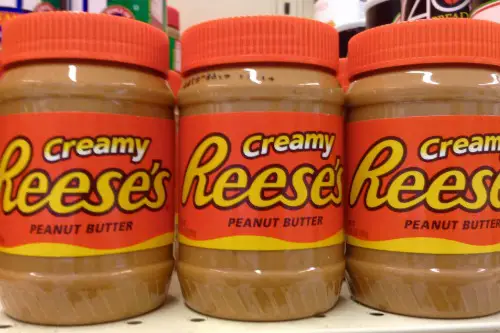
Peanut butter wasn’t new during WWII, but it absolutely became a survival food for troops and civilians alike. It was high in protein, didn’t spoil, and could be eaten in a million different ways. The U.S. government even promoted it in nutrition campaigns during rationing. And with sugar and meat in short supply, peanut butter sandwiches became go-to meals for kids and adults.
After the war, PB&J cemented its place in lunchboxes across America. It was affordable, kid-friendly, and endlessly adaptable. School lunch programs picked it up, and companies like Skippy and Jif kept the momentum going. Crisis or not, peanut butter proved it was here to stay.
13. Tang

Tang burst onto the scene during the Cold War space race, thanks to its association with NASA. Though it was developed in the 1950s, Tang became famous in the ’60s when astronauts reportedly drank it in space. That cosmic connection gave the powdered orange drink an instant cool factor. But its appeal was also rooted in practicality—it didn’t need refrigeration and lasted forever.
Families loved it for the same reason the astronauts did: it was cheap, easy, and sort of nutritious. Tang became a breakfast table staple in households that embraced convenience and futurism. The Cold War may have been stressful, but at least it gave us citrus-flavored optimism. It’s powdered patriotism in a glass.
14. Casseroles
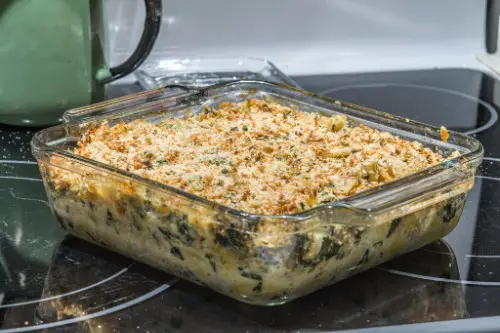
Casseroles came into their own during the Great Depression and were further popularized during WWII. They were the ultimate “stretch a meal” solution—throw some protein, starch, and a can of soup together and call it dinner. Cream of mushroom soup became the unsung hero of the American kitchen because of this. You could feed a family, use up leftovers, and save money all at once.
After the wars, casseroles didn’t go anywhere—instead, they evolved into a suburban dinner party staple. Tuna noodle, green bean, and tater tot casseroles were born from this era. They’re comfort food with a backstory rooted in survival. Even now, when you’re feeding a crowd on a budget, casserole’s still king.
15. Bisquick
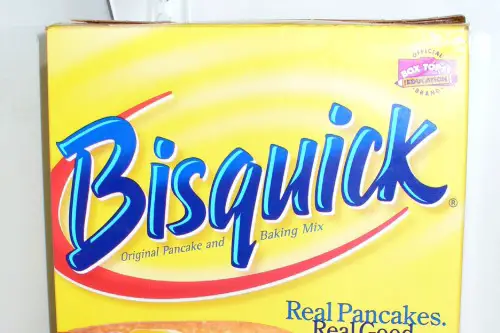
Bisquick was actually introduced in the 1930s, right before the Great Depression, and found a ready market when people needed shortcuts and cheap meals. It offered an all-in-one mix for biscuits, pancakes, and dumplings—just add water or milk. That kind of simplicity was a game-changer when money and time were both in short supply. Plus, it didn’t require a fridge, which made it even more practical.
During WWII, Bisquick found another wave of popularity as women managed homefront kitchens with fewer resources. Recipes expanded to include casseroles, coffee cakes, and even meat pies using the mix. It became a Swiss Army knife of pantry ingredients. Crisis made it popular, but convenience made it last.


